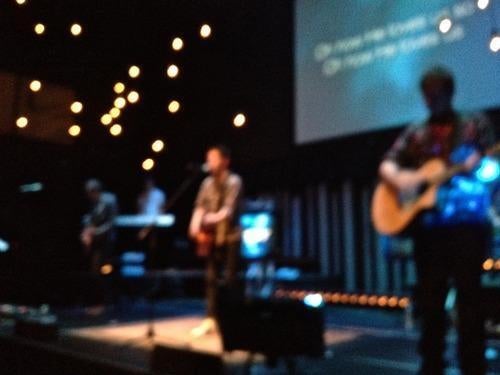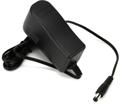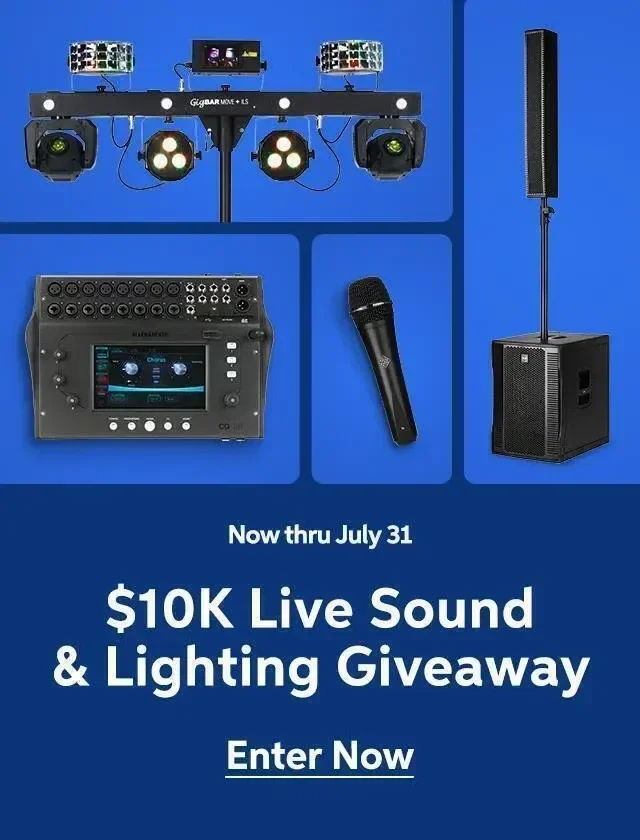
Reprinted from the 2011 issue of the Worship Sound Pro Church Sound and Music Technology guide
A few years ago, Travis released a record called The Invisible Band. I love this phrase so much that I mentally started using it as I prepared my heart and stage for worship. In so many towns and cities across this nation — and even across the world — worship teams are setting the stage on Sunday mornings. But in many ways, the format of these services at first glance represents something quite different from what we’re shooting for. Our goal in these services is not to sell our records. It’s not to sell t-shirts of the band during intermission. It’s not to give people a really good opportunity to see who we are and what we look like up close. It’s not even to let them revel in the sheer brilliance of our artistry. Ha! The goal — the only goal — is to help people turn their eyes and their hearts and their hands toward the Lord. We’re trying to help people who are mostly not musicians — those who don’t spend the kind of time and money on iTunes or Sweetwater.com that we do — sing their hearts and their prayers to our God. It’s a pretty big task.
And obviously one of the ways that we can derail that act of service is by treating the stage as a platform for our own skills and brand and art — by putting on the baddest rock show for our unsuspecting congregation early on Sunday morning! Ha! But there’s another, far more common way for this act of service to become derailed, and that’s technical difficulties. While no one may come to you at the end of worship and say, ‘”Wow, something was really peaking at 250k,” there’s a good chance they were distracted from meeting with the Lord as they puzzled over why things felt so sonically strange.
So, here are just a couple of technical things that have really helped us, as a band, stay as invisible as possible while we try to lead large groups of nonmusicians in sung prayer to God!
In-ear monitors
I was a reluctant in-ear monitor user, just because I was so used to gauging what was going down in the room with my ears! But there are so many upsides with in-ears. The stage volume obviously goes way down, which makes mixing the house sound so much easier, and it allows for a generally lower-decibel output overall. This may at first sound like bad news, but on the invisible-band front, it just makes so much more musical sense to be playing at lower volumes on Sunday morning; that’s a very early time to be playing rock ‘n’ roll! Save the volume for the night, when ears and hearts are ready. But there are also a few other perks to in-ear monitors. I’m noticing my voice lasts that much longer because I can hear myself clearly, so I’m not pushing my vocal just to hear it. If you’re playing more than one service a day, this becomes super necessary. Another perk is that if the drummer is new to the gig or the drums, everyone can be listening to a click while playing. As a worship leader, this takes the pressure off me a little bit, because I don’t have to worry about keeping the band in time as well as playing my instrument, trying to sing in tune, leading a congregation in worship, etc. Obviously, wedge monitors do not allow for this, unless you really want your first five rows to be punished for their support. And for bands who are unable to practice as often as they like, in-ear monitors also allow for a musical director (MD) to quietly talk the band through the tricky changes of the song as worship is happening. This really allows the band to play confidently and steadily during the worship set. We’ve found that if the band is comfortable and relaxed onstage, the congregation will often feel the same way. And they’ll be far more likely to focus on the offering of worship they’re bringing to the Lord than on what the band is doing.
Oh, and here’s one last push for in-ears: say goodbye to acoustic guitar feedback! This, alone, should be reason enough to use them. Gone are the days when loud wedge-monitor volumes inflicted permanent damage on worship-leading ears.
Aviom systems
Again, for those of us who don’t have the time for two-hour soundchecks before weekend services, the Mix Save function on the Aviom personal mixing system is an unbelievable timesaver — a few tweaks for variables on the day, and the mix is ready to go. What a God send! Also, I’m sure the mix engineers are breathing a collective sigh of relief knowing that the musicians onstage have only themselves to blame for the quality of their mix! I could be wrong, but Avioms could save the church hours in conciliatory counseling! Of course, now is the time for us musicians to step up and learn how to get a good mix.
My acoustic chain
Somebody told me when I started out that it almost doesn’t matter what gear you have; you need to know how to use it. And it rings true. For me it’s taken awhile to get to the sound I’m stoked with. I’ve tried stereo sends. I’ve tried a range of guitars, effects, preamps, and DIs. But I’ve settled on this chain. The sound I’m getting fits so neatly into the mix of our band that, for what we do, it’s perfect.
I use a second-hand Taylor 812C that I bought in the early ’90s. I love that acoustic guitars get better with age, and this one is no exception. You’ll have to look hard to see me playing anything else. After I bought the Taylor, Dan Fogelberg’s tech set it and fitted it with a Fishman piezo (bridge) pickup that I run straight into Fishman Aura electronics. Because we play so many different rooms, having all of the mic-placement model options on the Aura allows me to tweak and handle frequency changes. But typically I sit between 5 and 7 on the Aura. Then I go into a BOSS TU tuner and into whatever DI I can find! Planet Waves 1/4″ cables all around. If baggage restrictions weren’t so increasingly severe, there would be more gear, but this is bare-bones greatness for me.
I sing through a Shure SM58; I’m a simple man! But I’ve also gotten so used to the sonic real estate around that mic — and I move in and out of range so subconsciously — that any other mic feels weird. I will, of course, defer to a Sennheiser if one’s around.
That’s it — that’s my live setup.
Demo time
For home recording and demos, I’m still pretty solidly locked into the invisible-band work ethic. I’ve found I need to be able to get something recording ready in about a minute, literally. Technology needs to be working well and completely invisible. Any longer than a minute, and the spark is gone. I use a Blue Kiwi mic, which I’m stoked with, into a Universal Audio 6176 preamp/compressor, then into my Pro Tools setup. I can be rolling in about 30 seconds. I’ve actually just bought a desk-mounted mic-stand arm — like the ones radio DJs have. I can literally swing it into place for acoustic and vocal recording. Geeky, I know. But those seconds count.
I’m a big fan of what I call “feel demos.” They are in no way perfect — as the band will tell you. But they capture the vibe I’m shooting for. I have a few DVDs of drum parts, which I’ll throw down if needed. Then I’ll play my ’77 Les Paul Custom or my really sweet F-hole Tele through a Line 6 POD to capture the mood. My band and occasionally my producers (Nathan Nockels for Everlasting God; Jason Ingram and Rusty Varenkamp for Our God Is Near) will take these feel demos and make magic with them. But for me, I’m just trying to capture a musical moment that will allow me the energy and enthusiasm to finish a song. If I’m feeling really psyched, I will mic my acoustic with my Beyerdynamic M 160 ribbon. But mostly, I’m literally singing drum, bass, and electric parts while I pound away on my acoustic and sing. It’s definitely not always pretty!








